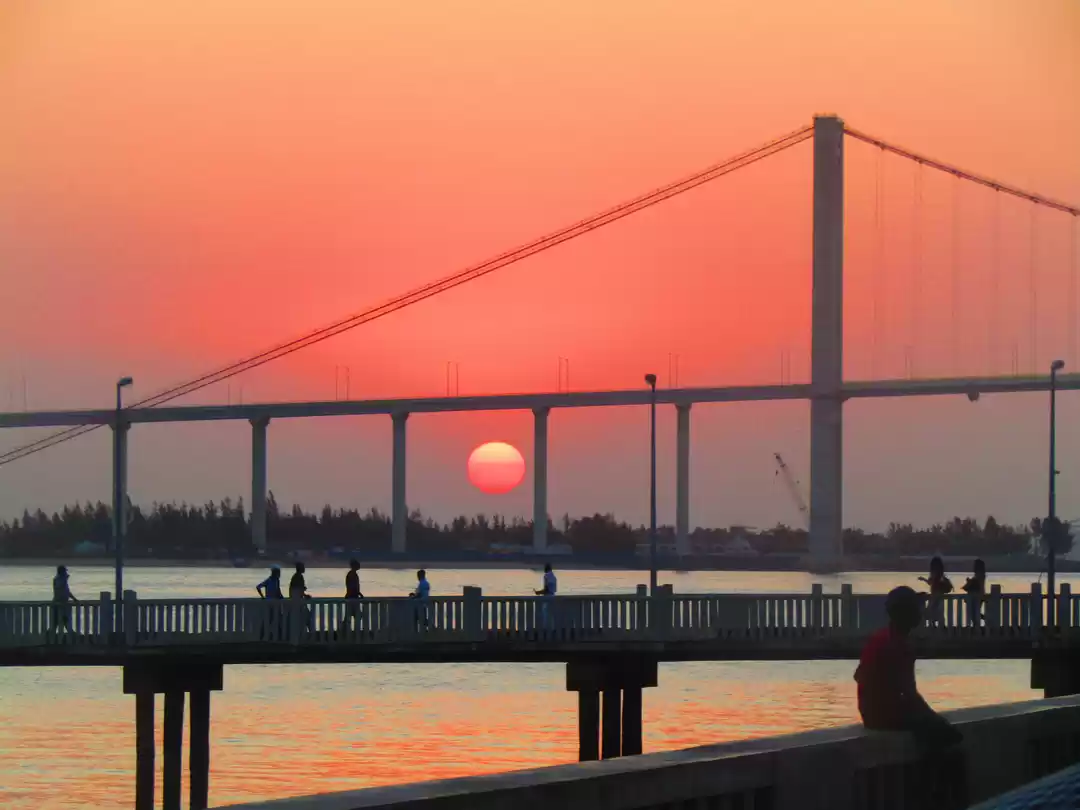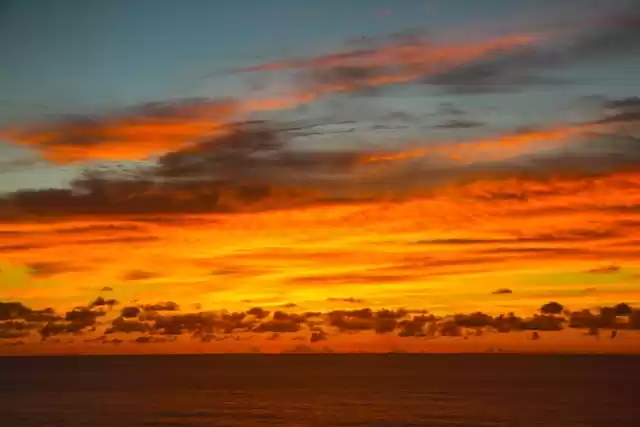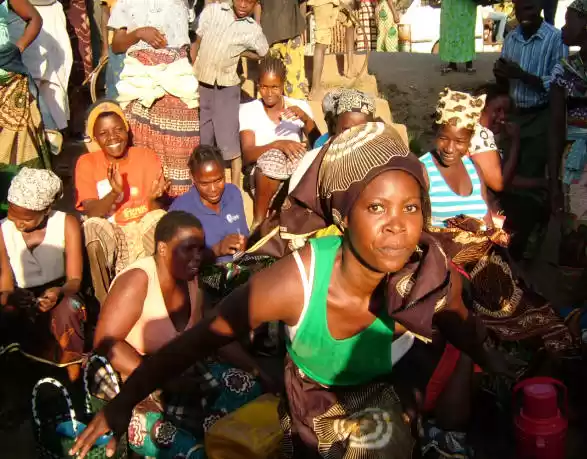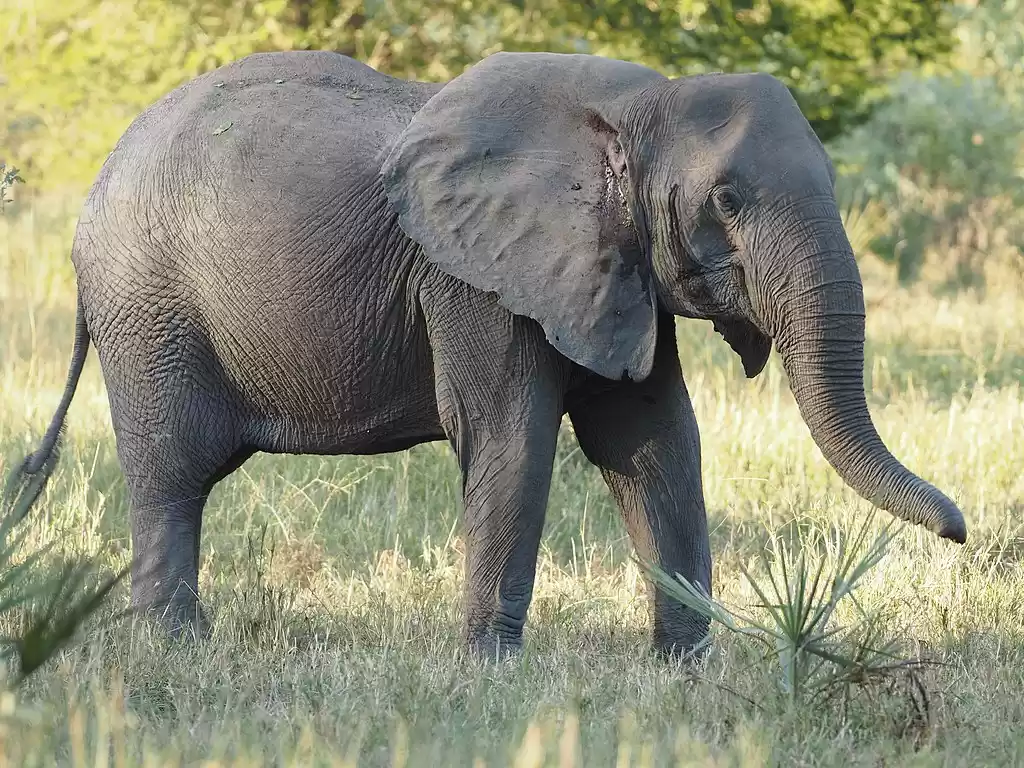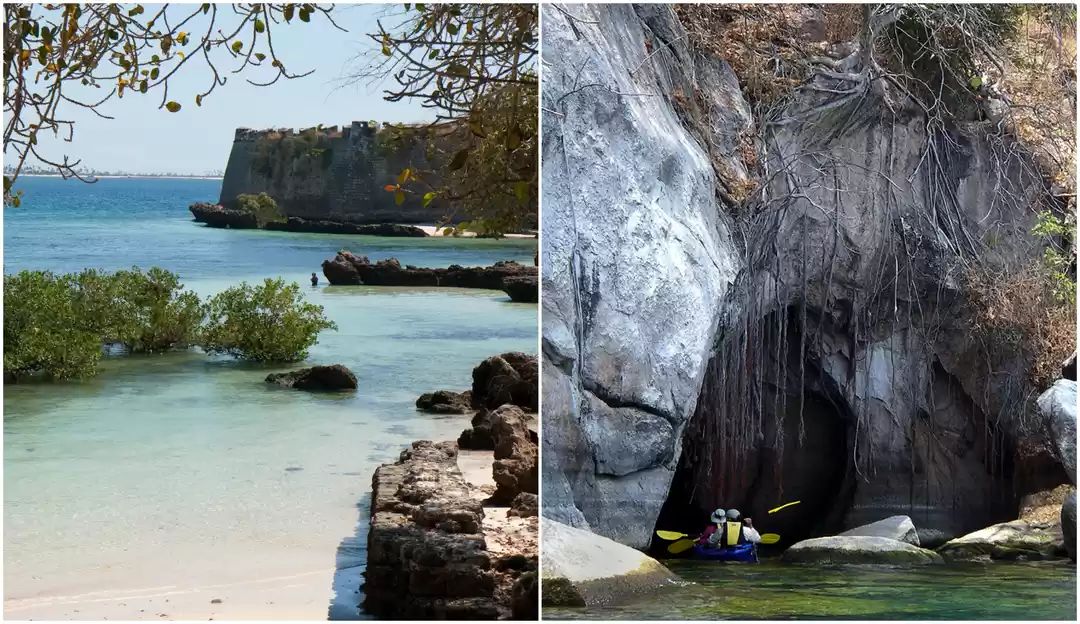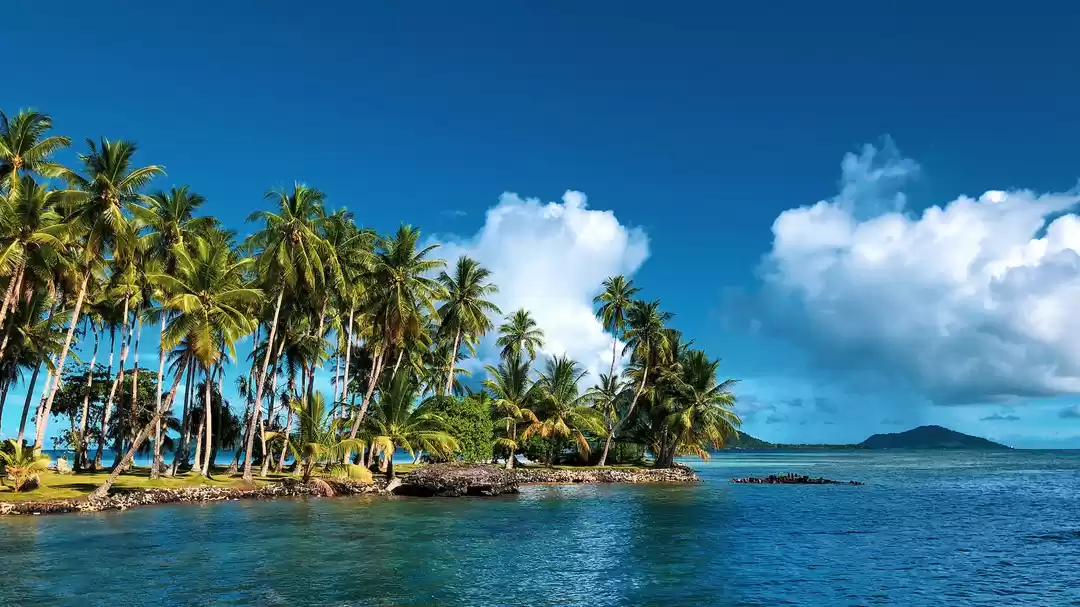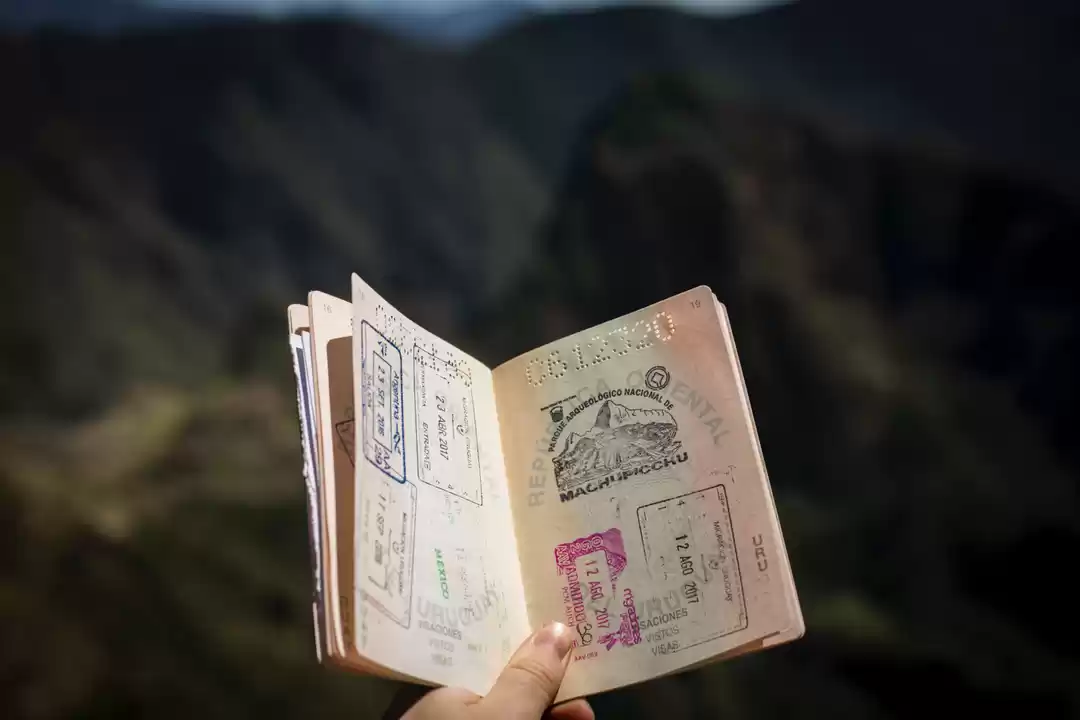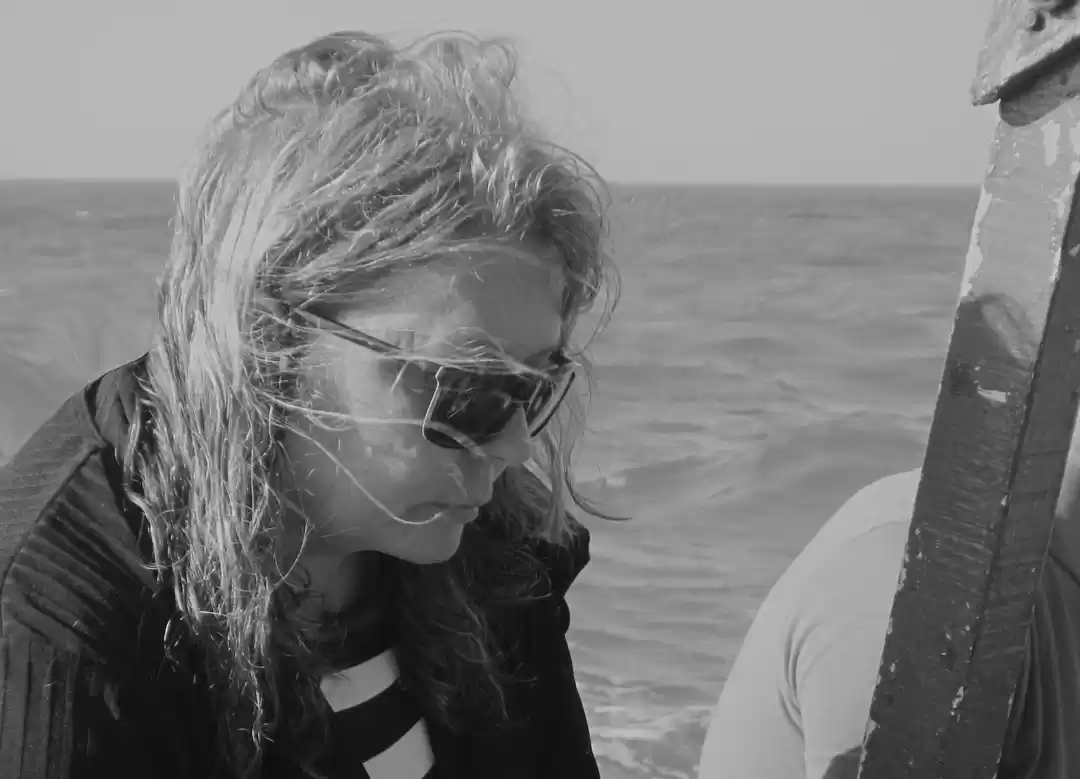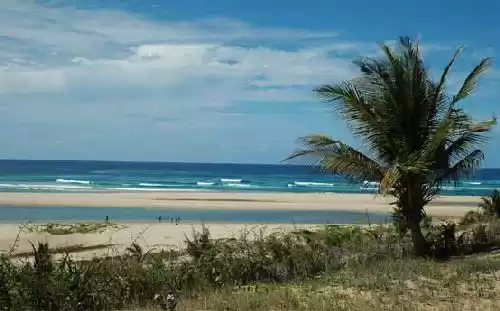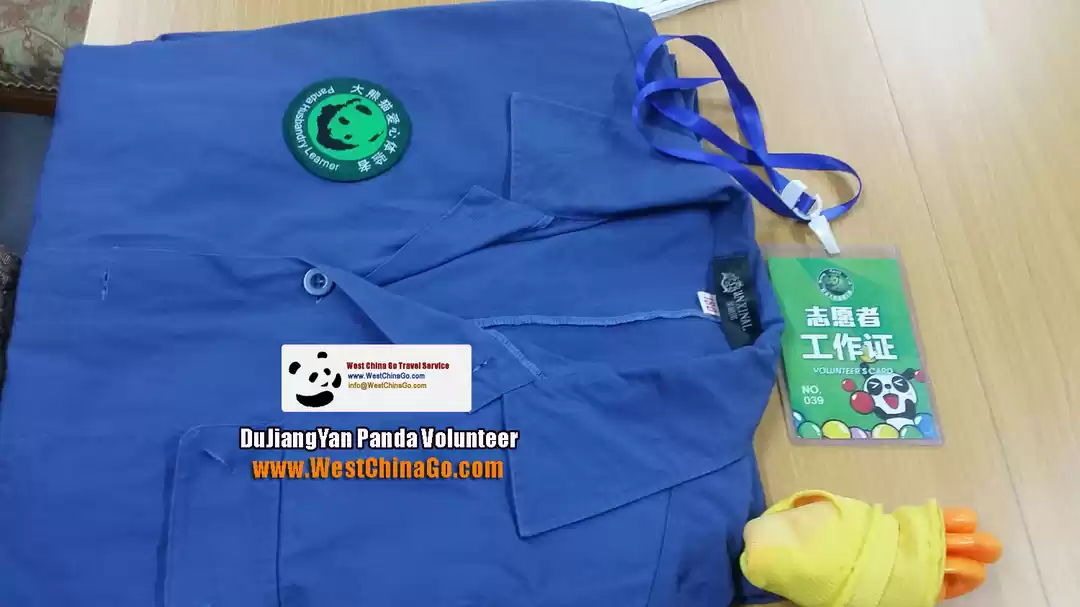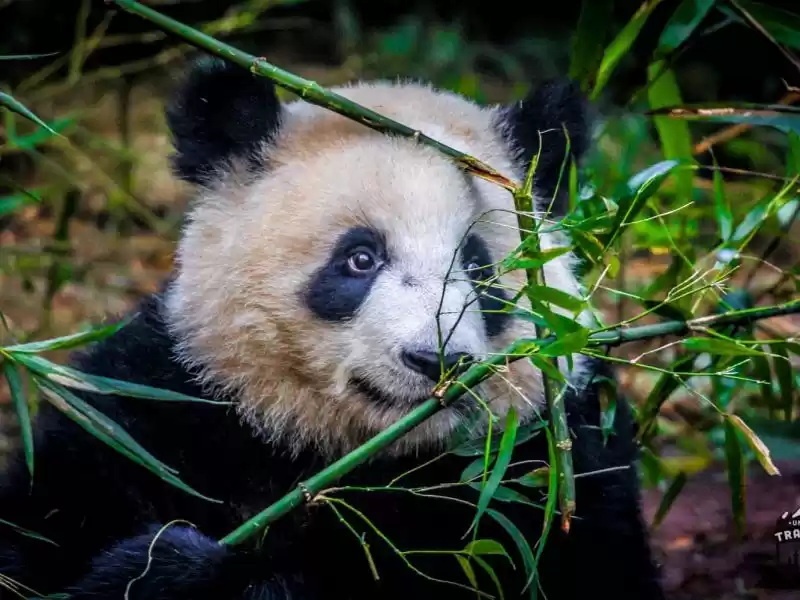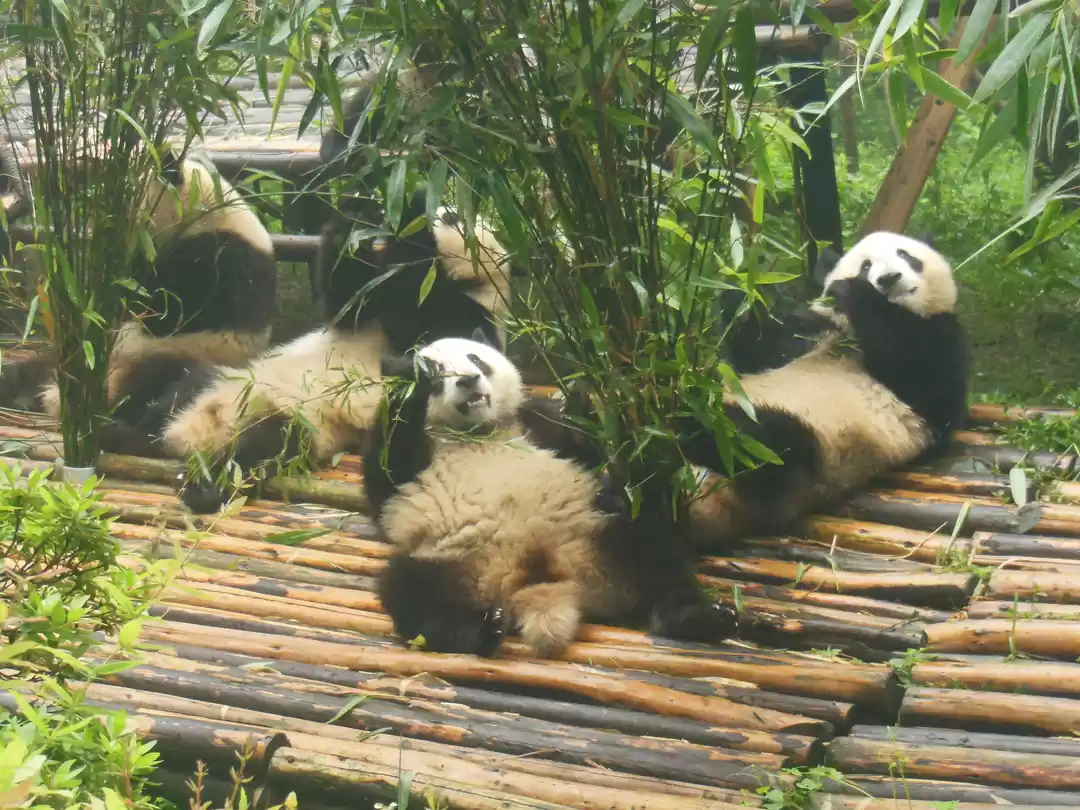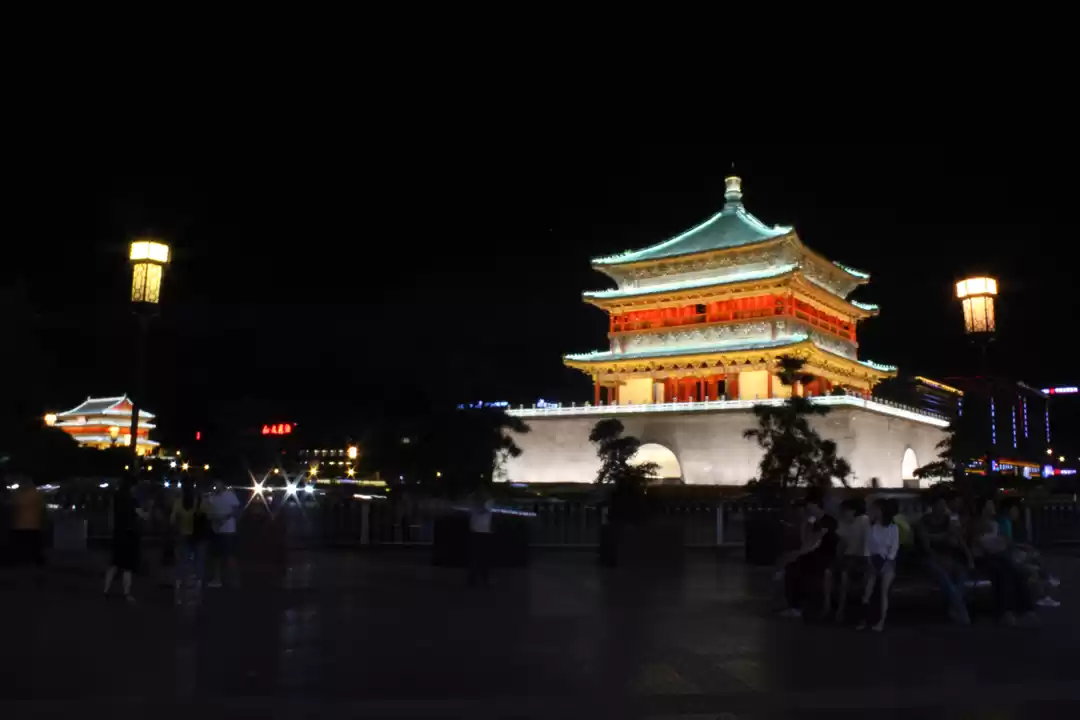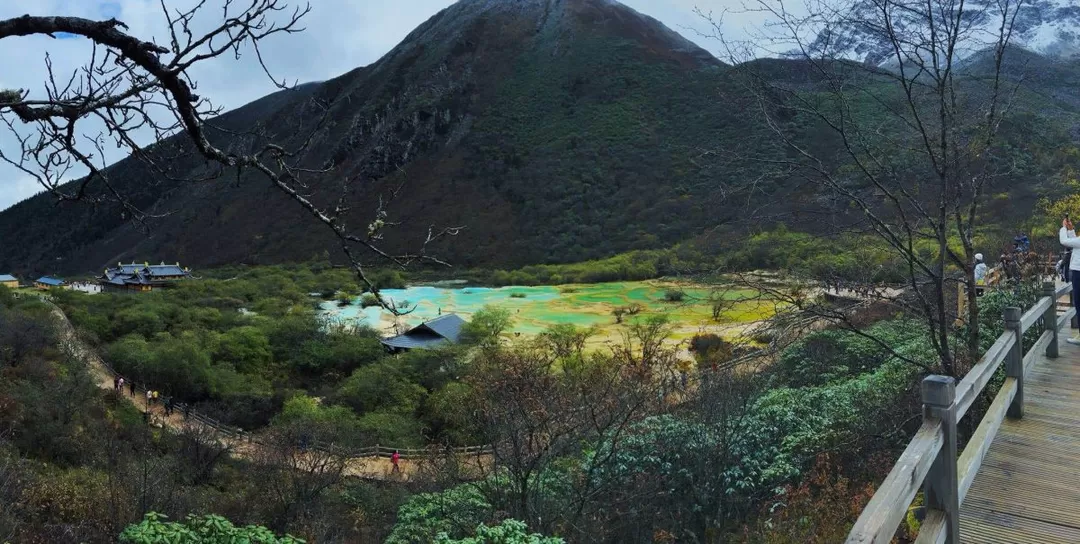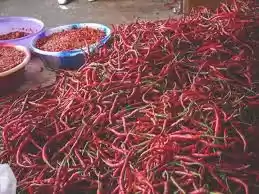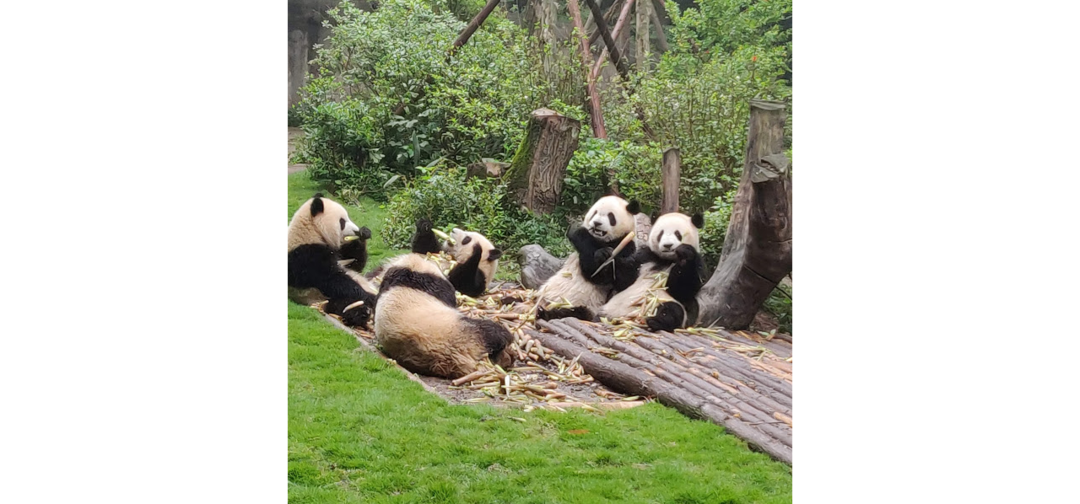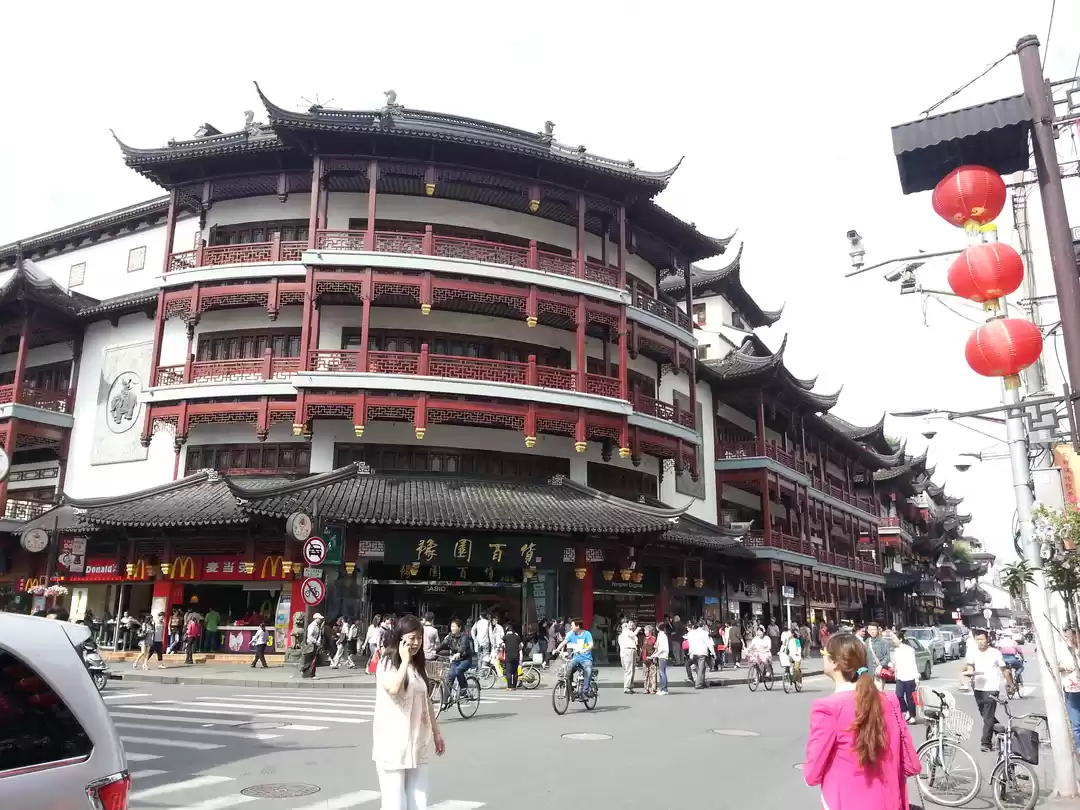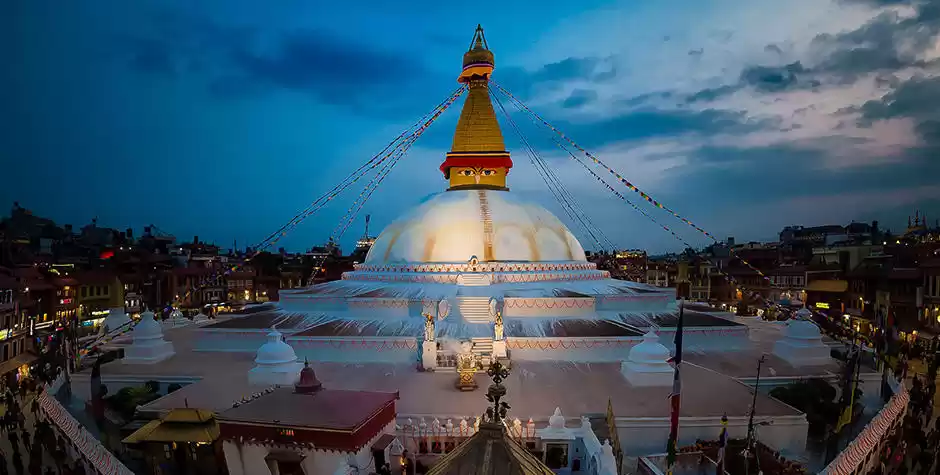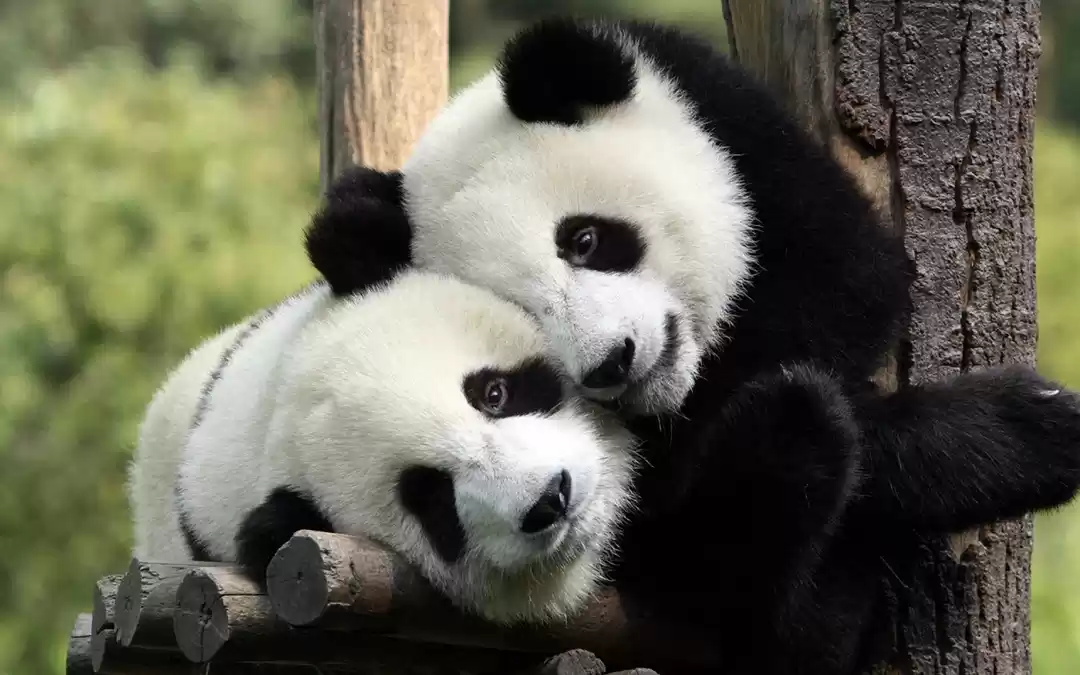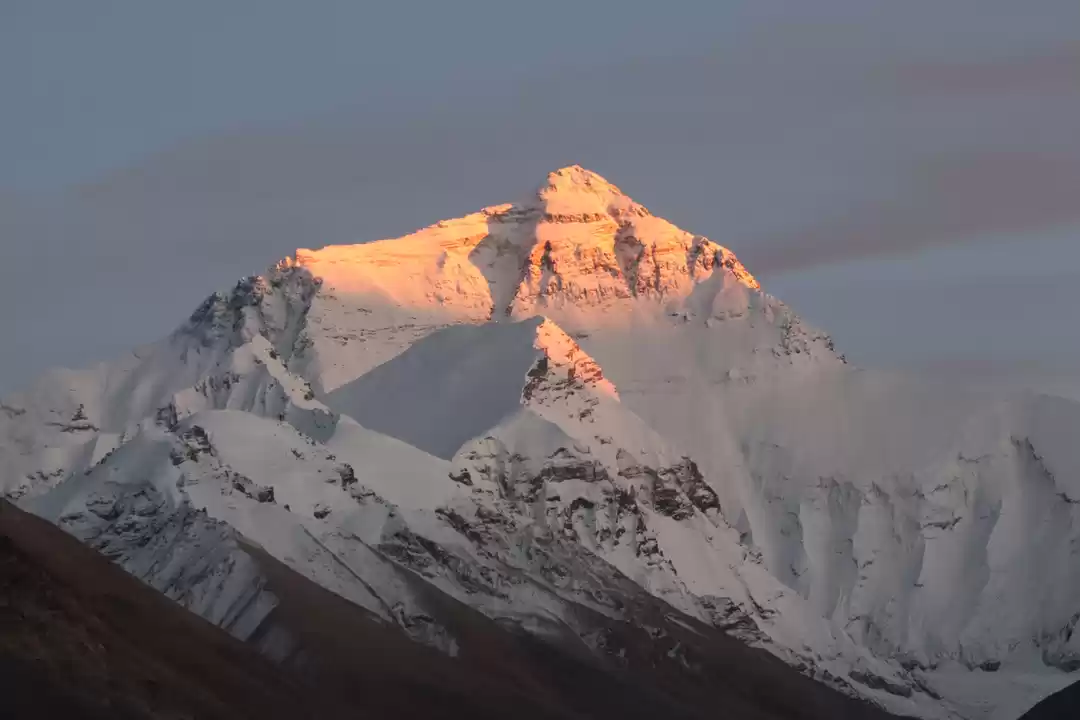
With the 2017 May Day long weekend approaching, we were wondering where to go next. Hari's family was visiting him for a short time and he wanted to make the best use of the weekends. We had not been introduced to FCN yet, and were still going with the private tour operators. The package was 6300 RMB per head including the round trip flight to Chengdu, which looked reasonable.
We had an early start on Friday and left for the airport at 4.30am. The taxi was too quick and we reached in 25 minutes. The flight was at 7.15am. We reached Chengdu ShuangLiu airport at 10.30 and were out of the airport in about 15 minutes. Nicole (Wang Jia), the guide was waiting for us. We were led to a parked 15 seater vehicle (that was a surprise to us). The driver Mr Zhou, was behind the wheels.
We were driven far away through the city to a restaurant. We saw some pilgrims doing a kind of shashtanga namasakara on the footpath for every few steps on the way to a temple. The restaurant would start serving only by 11.30, so we had to wait. The decor of the restaurant was great. With our limitations for food, we could order only certain things, but could see that most items were spicy. After lunch, we walked to the WuHou temple. This was the first time I was seeing a temple dedicated to Kings and their accomplices. Wuhou Temple (Memorial Temple of Marquis Wu) is dedicated to Zhuge Liang, the Marquis Wu (Wuhou) of Kingdom of Shu in the Three Kingdoms Period (220 - 280). It is a large complex of 37,000 square meters that also holds the temple of Liu Bei, the emperor of Shu (Zhaolie Temple of Han Dynasty). There are also statues of two of the ministers of Liu Bei and an example of their friendship. The temple also hosts Hui Mausoleum (of Liu Bei) and Triple-Success Stele. The three successes are: an article written by Pei Du, a famous minister of the Tang Dynasty who served four emperors in succession, calligraphy by Liu Gongquan, one of the most brilliant calligraphers in Chinese history, and a statement about the morality and achievements of Zhuge Liang.



After that, we walked in the Jinli Street, which was one of the busiest commercial areas during the Shu Kingdom (221-263). Hence, it is known as 'First Street of the Shu Kingdom'. It now brims with activity where variety food and handicrafts are sold. There are live demonstrations of many kinds of fine arts. The street has hundreds of unique spice and snack shops, pubs, fashion shops and those that sell Chengdu local brands. We left for the hotel around 3.30pm. The hotel's name was Jindi, on the Deshing road. The hotel was decent. Nicole left saying that we can visit Chunxi Road, which is well known shopping street by taxi later.



We let around 6.30pm and found it hard to find an empty taxi. We kept walking till we reached the street. We were looking for a restaurant and Hari got impressed by a place called Home Kitchen. With some difficulty we ordered the food, which was spicy. They sold a beer called snow, which was served with ice. From the restaurant, we could see many tall buildings around. A unique twin tower was just next. We went around the busy Chunxi shopping street. There is a long elevated pedestrian path that allows great view of the surroundings. There were masked men dancing in front of some shops and people gathering to see. We came back to room around 9.30pm.
Next morning 7am was the breakfast at the hotel restaurant, and we left for the Panda park at 7.30am.We reached the Panda park at Dujiangyan. The Chengdu Research Base of Giant Panda Breeding has been created to imitate the natural habitat of giant pandas in order that they might have the best possible environment for rearing and breeding. It was a wonderful sight watching the Giant pandas move around in their large spaces and devour the arrow bamboos with style. There are also few red (Lesser) pandas there. It was nice to see the intimate bonding the pandas had with the keepers.





In China the giant panda is seen as a national treasure. From close to extinction, the Chinese government has worked to get the numbers increased substantially over the years. One Tibetan legend of the Giant Panda is about how they got their beautiful, and unusual black markings. A long time ago, when pandas lived in the mountains of Tibet, they were white as snow. They were friends with four female shepherds that watched their flocks, in the mountains near their village. One day as the shepherdesses where playing with a Panda cub, a leopard leapt out of the bush and tried to attack the cub. The young shepherdesses threw themselves in front of the cub to save it and were killed by the leopard. All the Pandas in the area were saddened by their deaths and held a memorial service to honor them and their bravery. To remember their sacrifice for the cub, the Pandas all wore black ashes on their arms (as was the local custom). As they wept for the shepherdesses, they wiped their eyes with their paws, they covered their ears to block out the sound of the crying and they hugged each other in grief. As they did these things the ash spread and blackened their fur. The pandas did not wash the black off their fur as a way to remember the girls. To this day, pandas are covered with the black markings to always remember.
Around 10.30am, we left for Jiuzhaigou. This was going to be long journey through scenic hill roads and many long tunnels. There were many temples on the way and the colorful flags are remarkable. Traditionally, Tibetan prayer flags come in sets of five, one in each of five colors. The five colors are arranged from left to right in a specific order: blue, white, red, green, and yellow. They represent the five elements and the Five Pure Lights. Blue symbolizes the sky and space, white symbolizes the air and wind, red symbolizes fire, green symbolizes water, and yellow symbolizes earth. According to Tibetan medicine, health and harmony are produced through the balance of the five elements.



It was quite late by the time we stopped for lunch. Next to the restaurant, there was a workshop where they made bison faces and used the bison horns. The road was winding and along with it, ran river Minjiang. Next stop was for the toilet around 4pm. Unlike the toilets in other places, they were not free, and charged 1 yuan (and surprisingly not clean!). We reached Songzhou, in Songpan (Songzhou and Panzhou) county around 5.30pm. As it was quite late, we did not go into the ancient city. Outside, there is a landmark statue of Princess Wencheng and the Tubo King Songtsen Gampo. It tells a more than a thousand years old story. There used to be a war between the Tang Dynasty (618-907) and the Tubo Dynasty there. At that time the Tubo King Songtsen Gampo sent an envoy in the mission of proposing a marriage to Chang'an (named Xi'an now) City, capital of the Tang Dynasty. But the envoy was detained by Xu Qi, the governor of Songzhou Prefecture (Songpan County), when passed by the prefecture. Songtsen Gampo was so furious that he led a troop of 200,000 soldiers to intrude Songzhou Prefecture. Area Commander of the prefecture Han Wei failed the war. Later Emperor Taizong (599-649) of Tang Dynasty dispatched the head of the Ministry of Official Personnel Affairs Hou Jun to Songzhou Prefecture with more soldiers. After the war in Chunzhu Temple, Songtsen Gampo was defeated and retreated to Tibet. Then Gampo resent an envoy to re-establish the relationship with Tang Dynasty by intermarriage, with some gold as a gift. Emperor Taizong of Tang Dynasty took the proposal and married his daughter Princess Wencheng to Gampo. Their marriage became a famous romance.
On the way, Nicole was telling tales from legends. According to one, the Chang and Zhang minorities in western Sichuan did not eat fish or birds due to the funeral practices. One of them is letting the body into rived for fish to eat and the other (among six different ways) was celestial or sky burial. This is done for noble people who have not sinned, not lied and do not have scars on the body. According to the custom, the body is cut into 108 pieces and is fed to the birds, mainly vultures. A rich Zhang person was identified by the number of copper plates he received in return of his donations to temples, the number of Yaks he owns and the kind of decoration he wears. People made flutes made of animal bones, sometime from that of dead children's leg bones.



We reached out hotel 'Paradise' at Jiuzhaigo at 8pm. It was almost 12 hours since we left Chengdu. We freshened up and had dinner at a nearby place. Next morning we started at 7am and were taken to the entrance of the national park where Nicole bought the tickets by standing in a long queue. It was a rainy day. The national park is also called as fairyland due to its beauty.

Jiuzhaigou (Nine village valley) park is located in the Aba Tibetan region, north of Sichuan Province in China. This land features perennially snow-capped mountain peaks, lush green forest, stretches of serene lakes, and various birds and animals, all contributing to the unique view of Jiuzhaigou Valley. The lakes are very unique in color and water is crystal clear. A beautiful local tale has it that a very long time ago, there lived a beautiful and kindhearted goddess in the mountain east of the Jiuzhaigou and an industrious and chivalrous god in the mountain west of it. They fell in love with each other and one day the god presented a big and shiny divine mirror to the goddess as a token a love. The goddess reached out to take it, but was too excited and nervous to hold it. Hence, the mirror slipped from her trembling fingers and dropped to the valleys, breaking into 108 pieces. These pieces turned out to be 108 winkling and glittering crystal lakes of different sizes, covering the land of Jiuzhaigou Valley. The route in the valley is in Y shape and there are frequent shuttles taking people to different destinations. On the right is Rize Valley, on the left is Zechawa Valley and at the south is Shuzheng Valley. We took a bus to the right of the Y and reached the arrow bamboo lake. Arrow bamboos are one of the favorite foods of Giant Pandas. There are large stretches of Arrow Bamboo growing around the lake, so it got its name as Arrow Bamboo Lake. Arrow Bamboo Lake is at 2629 meters above the sea level and covers an area of 170,000 m 2, and is a shallow lake with a depth of ~10 meters. The sight was breathtaking. Froom there, we moved to the Panda Lake. Panda Lake has color patterns of blue and green. Giant Pandas were said to have come to this lake to drink. The lake enters into the Panda Waterfalls, which was dry during this season. There were many people lending the traditional dresses, which the ladies and kids wore and took pictures.







We moved next to the five flower lake. This is also known as Five Flower Sea. It is an amazing view. Adjacent to it is the Peacock river way that resembles a peacock. Five Flowers Sea is the most spectacular scenery in Jiuzhaigou. There are many viewpoints created to enjoy the beauty. We went around in circles around this lake and spent a lot of time. It was lunch time. Nicole and I went for the self-heating food packets with rich and green peas. It was the first time I was using it. It has calcium oxide (quick lime) to which water is added and the food packet is kept above it. In ten minutes, due to the reaction, heat is generated and the food gets piping hot.
Next was the spectacular Pearl Shoal Waterfall. Spread over a long range, the view of the falls was amazing. There were many birds, the prominent being white capped Water Redstart, and I was missing my SLR camera. The name of the falls comes from the water droplets that sparkle like pearls in the sunshine.


The next one was Mirror Lake, in the junction of the Y. It is so named because of its ability to reflect the images of the surrounding mountains and forests. In the rain, it looked beautiful. Next we proceeded to the left, towards the Zechawa Valley. The first one was the tranquil long lake and there was the Five Color Pool. Also called Jade Pool, is fed by underground streams from Long Lake. Just as its name implies, the colorful water in this lake makes it as a charming part, though the pool is small.

We returned by the bus to the last past, that is the Shuzheng Valley, or the bottom part of the Y. The first sight was Rhinoceros Lake. This is the largest lake in the Shuzheng valley, and also the deepest with an average depth of 12 meters. The lake derives its name from a legend that tells of a monk from Tibet riding a rhinoceros. When the monk came to this lake he was so fascinated with the local scenery that he accidentally rode his rhinoceros directly into the lake. After this was the Tiger Lake. The Tiger Lake gets its name from the colorful trees that reflect in the clear water during autumn making it look like tiger skin. Next there were two waterfalls, Nuorilang and Shuzheng. The former is small and the latter is large. There were also few temples that we could not visit. We could see many large turning bells that are made to turn by the flowing water by directing the water into a turbine.
It was already 4.30pm, and we caught the bus to the entrance of the park. On the way, we saw few lakes, Sleeping Dragon Lake, Reed Lake (with dry grass grown) and the Bonsai Shoal with small plants. After this, we went to the Jiuzhai Songcheng Romance Park, a very famous theater, where Nicole had helped us to get tickets. We reached at 5.30pm and the show was to start at 6. We had burgers packed from a nearby restaurant. We also went around for some time seeing the Buddha and some other statues in the park. The show started at 6pm sharp. It was a rare spectacle that combined history and art with modern technology and the effects were magnificent. The first part of the play was the story of the romance and wedding of princess Wenchang to the Tibetan prince Songtsen. The show was a great combination of great visual effects, light, water, fire and a very artistic dancing and acrobatic display. The second part had a story of the 2008 earthquake of Sichuan. The show was indeed of top quality and magnitude. There was a moment when our seats shake during the earthquake scene.



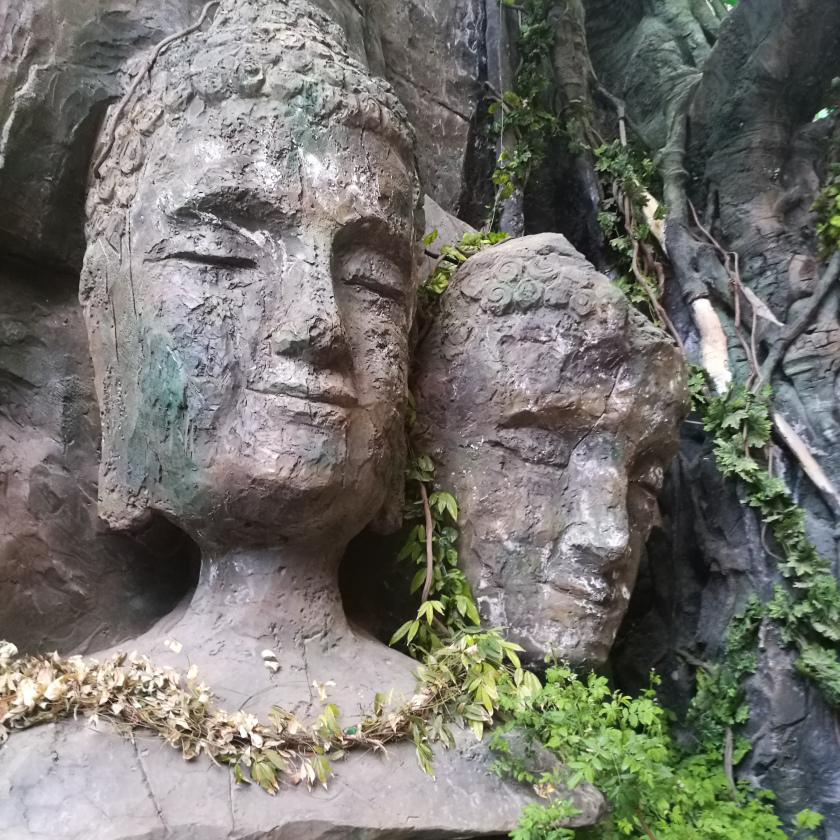
The show got over at 7pm and we came out. There was another half an hour's show in the open space outside. This had few Tibetan dances with differently masked characters. After return to the hotel, we went around for some time and tried some food in a nearby place. Next morning we had early breakfast started at 6.40 for Chengdu. There was a Tibetan village called Qiang Cheng in the schedule, but Nicole felt that we may get stuck in traffic in Chengdu and miss our flight, which was at 9.30pm. We had to agree. Nicole stopped the vehicle for us to visit the 2008 Sichuan earthquake memorial. On May 12, 2008, an earthquake registering 7.8 on the Richter scale struck Beichuan County, soon becoming the country's worst natural disaster in three decades. The quake, which was felt thousands of miles away in Hong Kong, caused immense structural damage and officially claimed nearly 70,000 lives (though the real figure is probably much higher). The place we visited had a clock tower, with the time stopped at 2.28pm, the time of the quake. A garden is developed there and some of the buildings are left as is to remember the natural calamity. In most places around, people display the national flag on their houses as a mark of respect to the government who helped rebuild their houses.
We reached Chengdu airport by 5.15 pm, and our flight was at 9.30. I thought it would be good to explore possibility of changing to an earlier flight. To our luck, the Sichuan airline staff was very cooperative and accommodated four of us on a 6.30pm flight to Beijing.
Trip to Sichuan will remain green in my memory forever for the enchanting beauty of Jiuzhaigou. Thanks to Nicole, for being a wonderful guide, and to Hari and his family for the excellent company.



